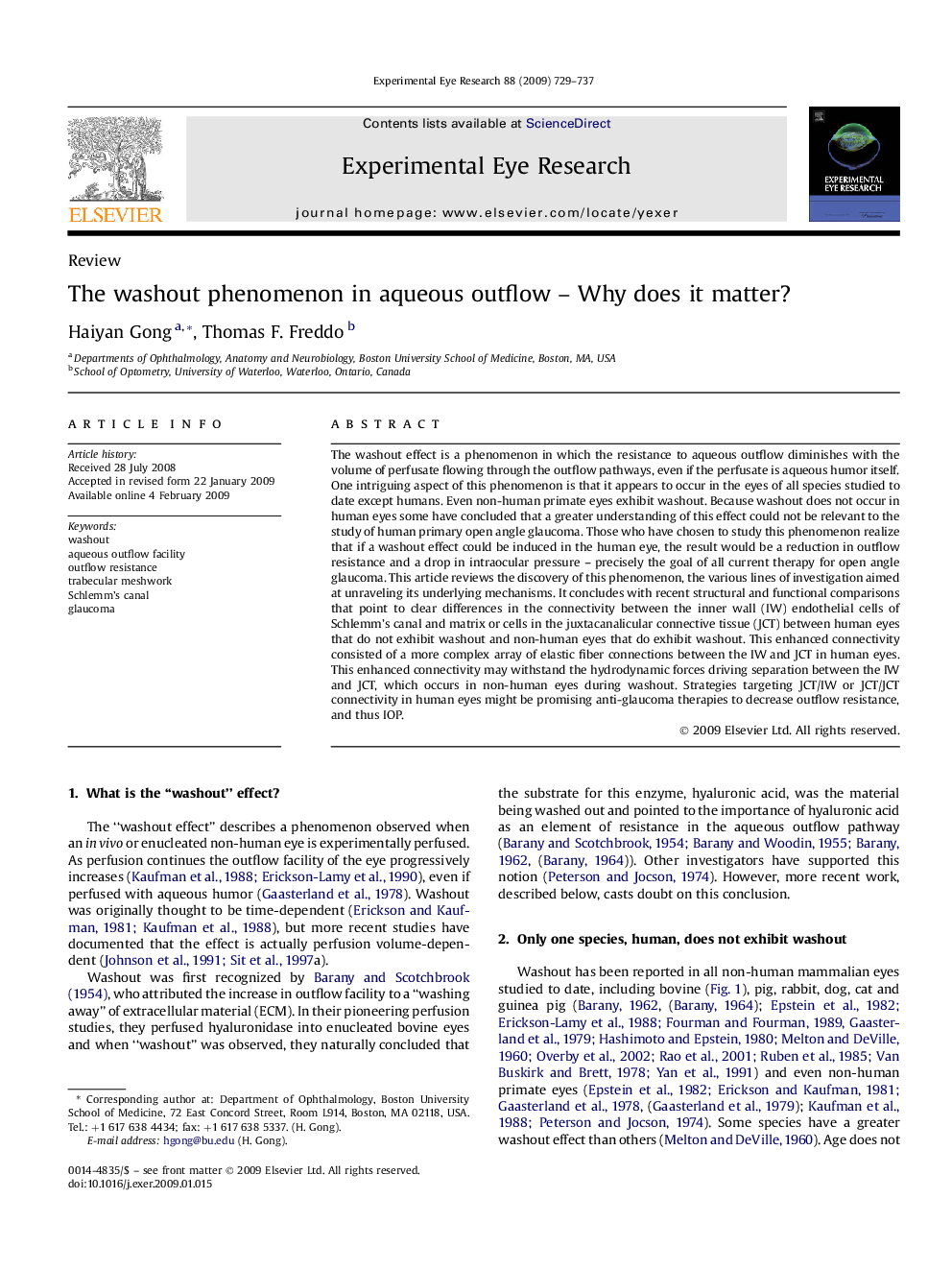| کد مقاله | کد نشریه | سال انتشار | مقاله انگلیسی | نسخه تمام متن |
|---|---|---|---|---|
| 4011958 | 1261172 | 2009 | 9 صفحه PDF | دانلود رایگان |

The washout effect is a phenomenon in which the resistance to aqueous outflow diminishes with the volume of perfusate flowing through the outflow pathways, even if the perfusate is aqueous humor itself. One intriguing aspect of this phenomenon is that it appears to occur in the eyes of all species studied to date except humans. Even non-human primate eyes exhibit washout. Because washout does not occur in human eyes some have concluded that a greater understanding of this effect could not be relevant to the study of human primary open angle glaucoma. Those who have chosen to study this phenomenon realize that if a washout effect could be induced in the human eye, the result would be a reduction in outflow resistance and a drop in intraocular pressure – precisely the goal of all current therapy for open angle glaucoma. This article reviews the discovery of this phenomenon, the various lines of investigation aimed at unraveling its underlying mechanisms. It concludes with recent structural and functional comparisons that point to clear differences in the connectivity between the inner wall (IW) endothelial cells of Schlemm's canal and matrix or cells in the juxtacanalicular connective tissue (JCT) between human eyes that do not exhibit washout and non-human eyes that do exhibit washout. This enhanced connectivity consisted of a more complex array of elastic fiber connections between the IW and JCT in human eyes. This enhanced connectivity may withstand the hydrodynamic forces driving separation between the IW and JCT, which occurs in non-human eyes during washout. Strategies targeting JCT/IW or JCT/JCT connectivity in human eyes might be promising anti-glaucoma therapies to decrease outflow resistance, and thus IOP.
Journal: Experimental Eye Research - Volume 88, Issue 4, 30 April 2009, Pages 729–737